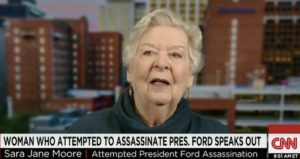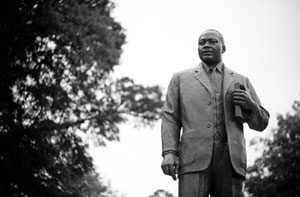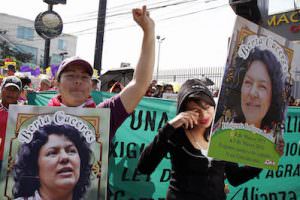Redacted FBI Documents Show Plot to Kill Occupy Leaders If ‘Deemed Necessary’
"Did the FBI ignore, or even abet, a plot to assassinate Occupy Houston leaders?" asks journalist Dave Lindorff at WhoWhatWhy. "What did the Feds know? Whom did they warn? And what did the Houston Police know?"
“Did the FBI ignore, or even abet, a plot to assassinate Occupy Houston leaders?” asks investigative reporter Dave Lindorff at WhoWhatWhy. “What did the Feds know? Whom did they warn? And what did the Houston Police know?”
A Freedom of Information Act request filed by the Washington, D.C.-based Partnership for Civil Justice Fund yielded an FBI document containing knowledge of a plot by an unnamed group or individual to kill “leaders” of the Houston chapter of the nonviolent Occupy Wall Street movement.
Here’s what the document said, according to WhoWhatWhy:
An identified [DELETED] as of October planned to engage in sniper attacks against protestors (sic) in Houston, Texas if deemed necessary. An identified [DELETED] had received intelligence that indicated the protesters in New York and Seattle planned similar protests in Houston, Dallas, San Antonio and Austin, Texas. [DELETED] planned to gather intelligence against the leaders of the protest groups and obtain photographs, then formulate a plan to kill the leadership via suppressed sniper rifles. (Note: protests continued throughout the weekend with approximately 6000 persons in NYC. ‘Occupy Wall Street’ protests have spread to about half of all states in the US, over a dozen European and Asian cities, including protests in Cleveland (10/6-8/11) at Willard Park which was initially attended by hundreds of protesters.)
Paul Kennedy of the National Lawyers Guild in Houston and an attorney for a number of Occupy Houston activists arrested during the protests said he did not hear of the sniper plot and expressed discontent with the FBI’s failure to share knowledge of the plan with the public. He believed that the bureau would have acted if a “right-wing group” plotted the assassinations, implying that the plan could have originated with law enforcement.
“[I]f it is something law enforcement was planning,” Kennedy said, “then nothing would have been done. It might seem hard to believe that a law enforcement agency would do such a thing, but I wouldn’t put it past them.”
He added that the phrase “if deemed necessary,” which appeared in the bureau’s report, further suggests the possibility that some kind of official organization was involved in the plan.
Texas law officials have a history of extreme and inappropriate violence. “Last October,” Lindorff writes, “a border patrol officer with the Texas Department of Public Safety, riding in a helicopter, used a sniper rifle to fire at a fast-moving pickup truck carrying nine illegal immigrants into the state from Mexico, killing two and wounding a third, and causing the vehicle to crash and overturn.”
Kennedy has seen law enforcement forces attempt to secretly entrap Occupy activists and disrupt their activities in the city. He represented seven people who were charged with felonies stemming from a protest whose organizing group had been infiltrated by undercover officers from the Austin Police department. The felony charges were dropped when police involvement with a crucial part of that action was discovered.
A second document obtained in the same FOIA request suggested the assassination plans might be on the plotters’ back burner in case Occupy re-emerges in the area.
When WhoWhatWhy sent an inquiry to FBI headquarters in Washington, officials confirmed that the first document is genuine and that it originated in the Houston FBI office. Asked why solid evidence of a plot never led to exposure of the perpetrators’ identity or arrest, Paul Bresson, head of the FBI media office, deflected the question. According to WHoWhatWhy, he said:
The FOIA documents that you reference are redacted in several places pursuant to FOIA and privacy laws that govern the release of such information so therefore I am unable to help fill in the blanks that you are seeking. Exemptions are cited in each place where a redaction is made. As far as the question about the murder plot, I am unable to comment further, but rest assured if the FBI was aware of credible and specific information involving a murder plot, law enforcement would have responded with appropriate action.
Lindorff wants us to note that “the privacy being ‘protected’ in this instance (by a government that we now know has so little respect for our privacy) was of someone or some organization that was actively contemplating violating other people’s Constitutional rights — by murdering them.” He says “[t]hat should leave us less than confident about Bresson’s assertion that law enforcement would have responded appropriately to a ‘credible’ threat.”
When the Houston Police department was asked about its knowledge of the plot, public affairs officer Keith Smith said it “hadn’t heard about it” and directed future questions to the Houston FBI office.
The obvious question to ask in attempting to determine the identities of the planners is this: Who has sniper training? A number of Texas law enforcement organizations received special training from Dallas-based mercenary company Craft International, which has a contract for training services with the U.S. Department of Homeland Security. The company was founded by a celebrated Army sniper who was killed by a combat veteran he accompanied to a shooting range.
Remington Alessi, an Occupy Houston activist who played a prominent role in the protests and hails from a law enforcement family, agrees with attorney Kennedy that the plot likely did not originate with a right-wing group. “If it had been that, the FBI would have acted on it,” he said. “I believe the sniper attack was one strategy being discussed for dealing with the occupation.”
The grotesque irony here, Lindoff writes, is that “while the Occupy Movement was actually peaceful, the FBI, at best, was simply standing aside while some organization plotted to assassinate the movement’s prominent activists.”
Lindorff concludes: “The FBI’s stonewalling response to inquiries about this story, and the agency’s evident failure to take any action regarding a known deadly threat to Occupy protesters in Houston, will likely make protesters at future demonstrations look differently at the sniper-rifle equipped law-enforcement personnel often seen on rooftops during such events. What are they there for? Who are the threats they are looking for and potentially targeting? Who are they protecting? And are they using ‘suppressed’ sniper rifles? Would this indicate they have no plans to take responsibility for any shots silently fired? Or that they plan to frame someone else?”
— Posted by Alexander Reed Kelly.
Editor’s note: A paragraph reporting the killing of undocumented immigrants by Texas border patrol officers in October 2012 was added after the initial publication of this piece.
Your support matters…Independent journalism is under threat and overshadowed by heavily funded mainstream media.
You can help level the playing field. Become a member.
Your tax-deductible contribution keeps us digging beneath the headlines to give you thought-provoking, investigative reporting and analysis that unearths what's really happening- without compromise.
Give today to support our courageous, independent journalists.








You need to be a supporter to comment.
There are currently no responses to this article.
Be the first to respond.